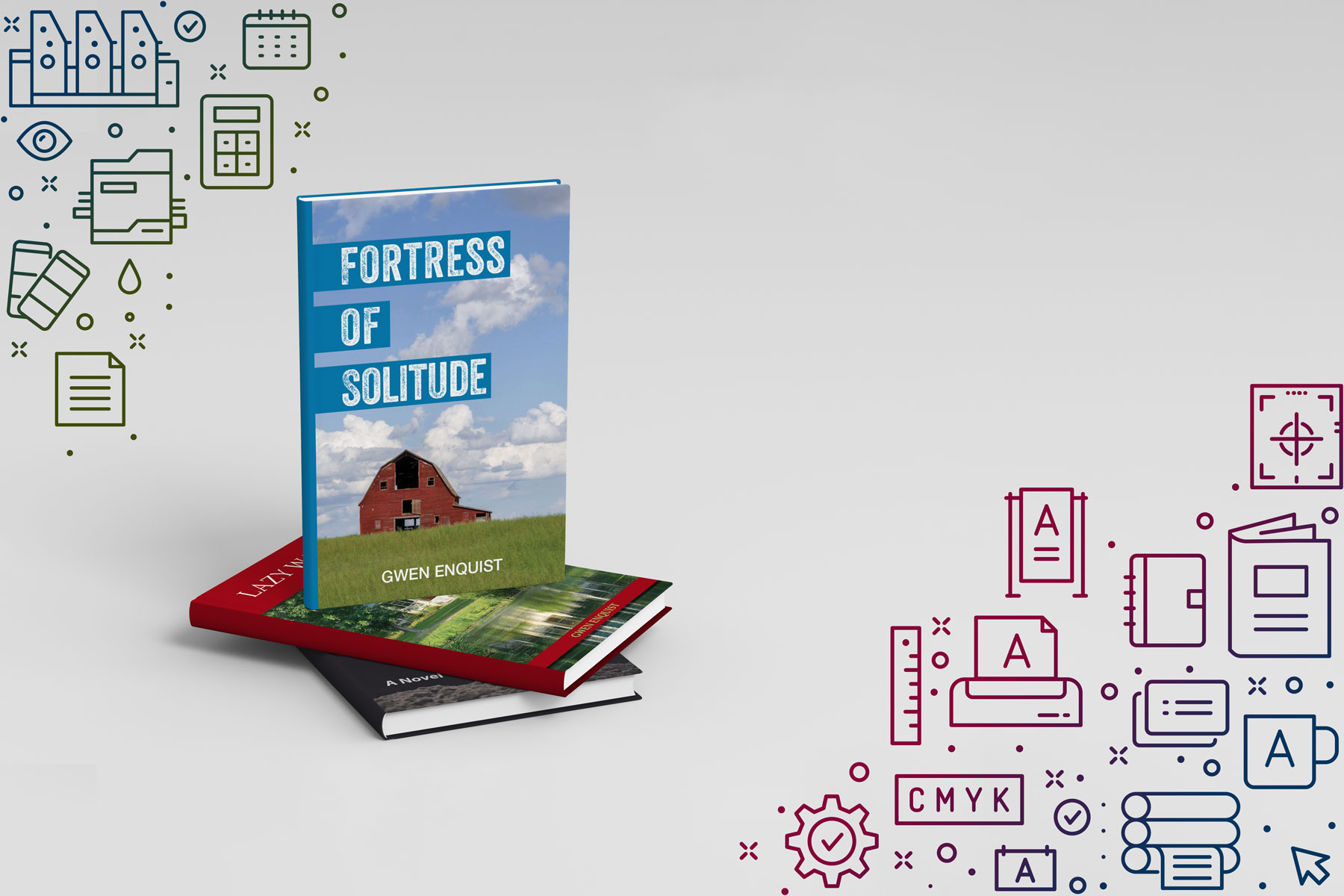There you are, about to hit save for the final time on your new book, but what comes next? It’s one thing to write your novel, family history or personal biography, but how do you get it into people’s hands? Naturally, the first step is to get it printed, and that’s where we can help.
Here are the basic steps in going from your manuscript to a finished product:
(1) You’ve written the book, that’s the hardest step: Congratulations!
(2) Get your manuscript proofread and/or edited
At a minimum, it’s a good idea to have at least one other person read your manuscript. This can bring to light things like holes in the character or story development, but your reader(s) can also catch minor errors in spelling or missed capitalization.
Having a competent reviewer can be the best route, but using a professional editor can make a big difference if there are more serious issues in the writing.
(3) Assemble your images; write captions
If you are using any photos, graphics, maps and the like, this is the time to gather them in one place. If you have any questions, talk to a book or graphic designer about the specifications for images. The main issue is to have high quality/resolution images. The designer can resize, adjust colours, convert to greyscale (black & white). The key is to start with the best available graphics.
If your images need a bit of explaining, write the captions for each image. For simplicity, do this in a separate text document, connecting file names with their caption.
(4) Decide what will go on the cover, and the back cover
What image or images best convey the contents of your book? Is it a family photo? Or a collage of several? Other ideas include a custom-drawn image that connects to the inside.
If colour is important, think of the key ones you want to see; this is also a good time to rely on your designer who can work with you to provide some options.
What about the back cover? This is a great place to include an author mini-biography and headshot, plus a teaser about the contents. If you have reviews from suitable sources, consider one or two to help “sell” the book.
(5) Prepare your files for handoff to the graphic designer
While there are many options, the most common is to submit Word files. These can be single files for each chapter or section, or a single file of the whole manuscript. In general, don’t worry about formatting or inserting graphics or using word-art. The key is to make obvious the relative parts of the book. These could include Sections, Chapters, Inserts or call-out boxes. As long as your designer knows where all the pieces belong, you’ll be fine.
(6) Review and proofread first draft
At this point, your book designer will generate a printed or PDF proof for your consideration and review. We prefer to deliver a hard copy print as it can be easier to review and flip back and forth as you do. If you have the tools, a PDF proof can be include edits, post-it notes and other instructions.
(7) Designer makes the changes
You have done your review, listed the changes and handed the manuscript back to the designer. He or she will introduce your corrections and other edits. Once done, you will get a final proof to approve. This is usually a PDF, but can be printed if you prefer.
(8) Final proof and approval to print
Now that everything is good to go, your signoff to go ahead is all that is needed to send the book to the press. Most presses will provide a single, hard-copy of the new book that lets you and your designer double-check that all the elements are in the right places and the book is consistent. Changes at this stage, while still possible, are usually rare, and they may include additional fees.
(9) Plan your distribution/sales of the book
As you await your box(es) of books, think about how they will be distributed. If it’s a family story or biography, you already know who will be getting copies. One note: even if just for the family and friends, order more than you think you will need. For example, if you’re printing 50 books and have 45 people getting one, think of printing an extra 10 or 15 as this is the best time to get prints.
If you will be offering the book for sale, think about the price you need to make it profitable. Where will you sell it? What is your wholesale price if retailers are carrying your book? Who will talk to potential sellers? Have you considered doing author readings or similar special events?
A designer with experience in marketing will be able to provide ideas to make your book a retail success. At Works, our book design packages include marketing strategies and suggestions.

